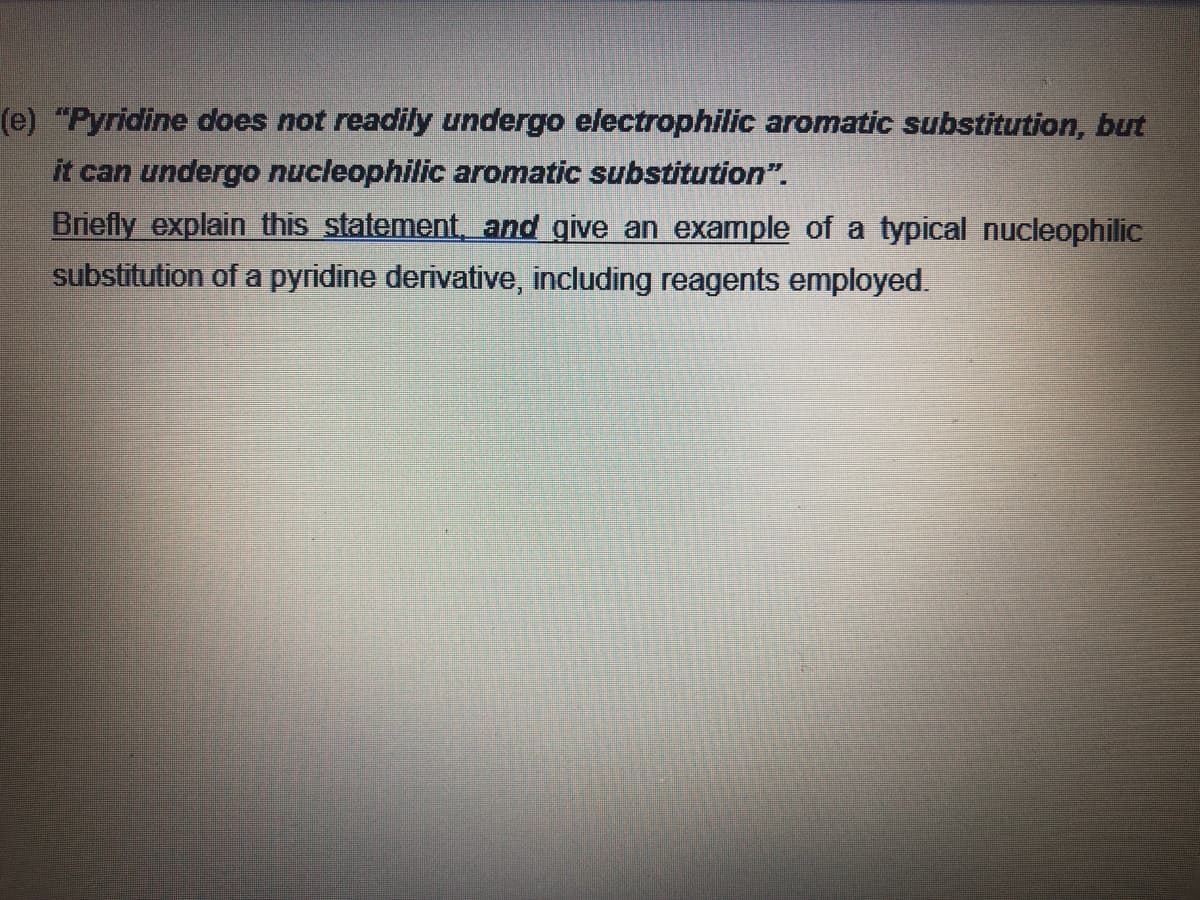e) "Pyridine does not readily undergo electrophilic aromatic substitution, but it can undergo nucleophilic aromatic substitution". Briefly explain this statement, and give an example of a typical nucleophilic substitution of a pyridine derivative, including reagents employed.
e) "Pyridine does not readily undergo electrophilic aromatic substitution, but it can undergo nucleophilic aromatic substitution". Briefly explain this statement, and give an example of a typical nucleophilic substitution of a pyridine derivative, including reagents employed.
Organic Chemistry: A Guided Inquiry
2nd Edition
ISBN:9780618974122
Author:Andrei Straumanis
Publisher:Andrei Straumanis
Chapter21: Nas: Nucleophilic Aromatic Substitution
Section: Chapter Questions
Problem 2E
Related questions
Question

Transcribed Image Text:(e) "Pyridine does not readily undergo electrophilic aromatic substitution, but
it can undergo nucleophilic aromatic substitution".
Briefly explain this statement, and give an example of a typical nucleophilic
substitution of a pyridine derivative, including reagents employed.
Expert Solution
This question has been solved!
Explore an expertly crafted, step-by-step solution for a thorough understanding of key concepts.
This is a popular solution!
Trending now
This is a popular solution!
Step by step
Solved in 2 steps with 1 images

Knowledge Booster
Learn more about
Need a deep-dive on the concept behind this application? Look no further. Learn more about this topic, chemistry and related others by exploring similar questions and additional content below.Recommended textbooks for you

Organic Chemistry: A Guided Inquiry
Chemistry
ISBN:
9780618974122
Author:
Andrei Straumanis
Publisher:
Cengage Learning

Organic Chemistry: A Guided Inquiry
Chemistry
ISBN:
9780618974122
Author:
Andrei Straumanis
Publisher:
Cengage Learning